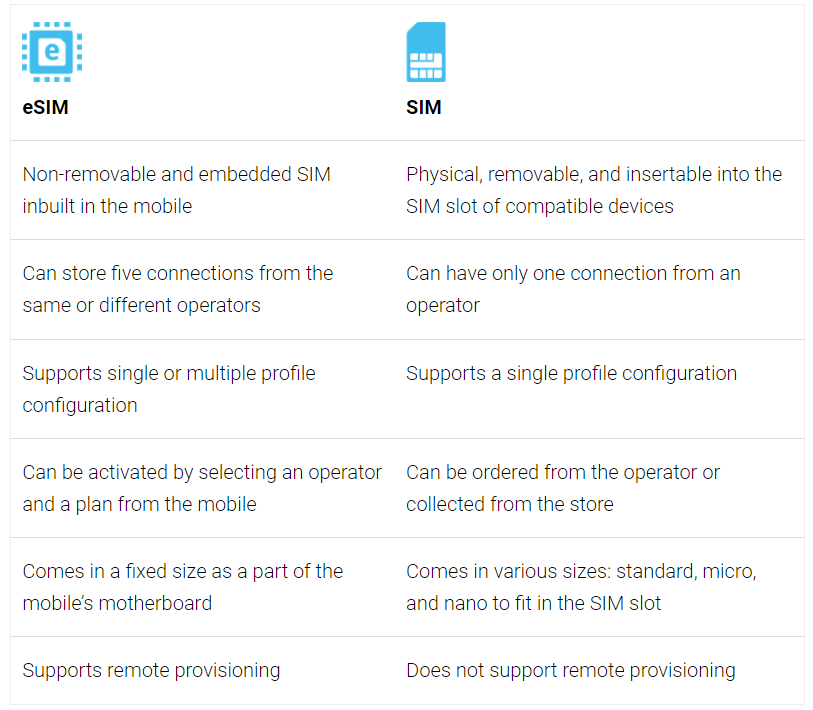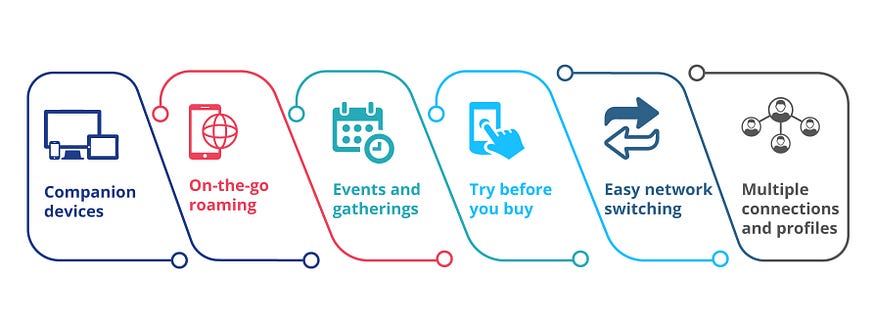How eSIM will help telecom operators unlock new revenue opportunities
by Alepo Technologies Inc Digital enablement and revenue management softwareThe evolution of smartphones and devices over the last decade has given users a new way to access information and data at lightning speed. Smartphones are now being used as digital assistants, making everything from telemedicine to remote work more accessible and enjoyable. With the growing demand for accessibility and security, more bandwidth, and constant connectivity, operators are always looking for innovations that will help them evolve user experience and differentiate their offerings, while lowering costs and unlocking new revenue opportunities.
The eSIM (or embedded SIM) is one such innovation that helps operators meet all these criteria and takes telcos closer to their digital transformation goal.
What is an eSIM?
An eSIM or embedded subscriber identity module is the same as a regular SIM, except it comes permanently embedded in the smartphone. It replaces the need for a physical SIM card and a SIM card slot on the device. Users can remove or swap between different eSIM-based networks with more ease. eSIM also offers remote SIM provisioning technology, which enables the user’s profile information to be downloaded directly onto the device.
The traditional SIM has a unique IMSI (International Mobile Subscriber Identity), which identifies the phone on the cellular network. Along with the IMSI, the SIM also has a unique MSISDN, primarily, a mobile number that is used by other consumers when they call or text you. An eSIM can, however, be reprogrammed and rewritten, unlike a traditional SIM. That allows you to switch between networks without removing the SIM card.
Given the benefits of eSIM for operators and consumers, the technology has enormous potential to transform network experiences in the near future. For consumers, eSIM makes it easier to add companion devices to cellular plans, as well as manage multiple connections, profiles, and bundled subscriptions using a master subscription. Operators benefit from eSIM technology by being innovative in offering multi-device bundling, connected IoT devices/UEs, shared plans, and much more, while significantly lowering their OPEX. eSIM eliminates the overheads associated with physical SIM installation and changing operators.
For telecom operators, eSIM can potentially be a great revenue-generating and customer-retention tool.
Difference between eSIM and SIM

How can telecom operators benefit from eSIM?
eSIM enhances the innovation and revenue capabilities of the operator, as it facilitates operators to introduce next-gen plans for the customers, their profiles, connected devices, and more. There are many more benefits that eSIM can provide to telecom operators, including:
Provides a seamless onboarding experience
Using eSIMs can help streamline the onboarding process because they allow consumers to switch operators remotely without visiting a store to obtain a physical SIM card or waiting for SIM card delivery.
Using the QR-code scanning functionality of eSIM technology, consumers can instantly add multiple owned devices. It allows operators to have more cellular-connected devices on their networks and provide a consistent customer experience across multiple devices, improving accessibility and increasing subscriber retention.
Enhances flexibility and security
With traditional SIM cards, one must purchase a new SIM card and insert it into the device — which is not the case with eSIM. With eSIM, consumers can be onboarded quickly.
Moreover, if a phone is lost with a physical SIM card, a lock screen, biometric activation, and remote lock support could stop attackers from accessing it. However, one can still take out the SIM card and use it on another unlocked phone, allowing the hackers to make calls, send text messages, or access social media and bank accounts. An eSIM provides prevention in all such uncontrollable scenarios.
Enables hassle-free roaming experience
Switching to a local network while traveling would be easier with eSIM because it does not require physical insertion. It would assist operators in providing frequent business travelers with a seamless roaming experience. Additionally, because multiple profiles are possible, travelers can stack plans from multiple operators and select the most suitable plan as they travel from one country to another.
Lowers operational overheads
eSIM enables operators to increase ARPU without incurring operational costs or physical touchpoints. Customers can choose the available mobile network, whether local or roaming, without relying on the operator. Furthermore, when a subscriber misplaces their physical SIM cards, it incurs additional costs and inconveniences for both consumers and operators to reactivate a replacement.
Allows users to have multiple connections
eSIM removes the restriction of having a limited number of connections on a mobile phone. Consumers can have multiple connections from one or more operators, as well as can opt for device-based plans and shared bundling from different operators. With traditional SIMs, the consumer can carry one dual SIM mobile or have multiple mobiles if they own more than two connections. On the contrary, one eSIM can hold up to five virtual SIM cards or profiles simultaneously, facilitating consumers to quickly switch profiles based on needs. For example, a consumer can switch to a personal profile from a professional profile after work hours.
Unlocks revenue opportunities
Watches and other companion devices can help to increase ARPU. As device bundling will be easier and users can add new devices to their plans effortlessly, Telcos can offer multi-device packages and cellular and data plans. The customized and additional plans needed by customers will offer new revenue opportunities to operators. And the eliminated need to produce physical SIMs will help telcos save money and improve revenue margins.
Since traditional voice and SMS services are declining, many operators are concerned that eSIM will result in a loss of profits. However, they can consider selling additional subscriptions to their existing customers to activate a secondary subscription on the device. For example, customers who frequently visit other countries without international data plans can be encouraged to purchase a secondary subscription from one of the operator’s partners in other countries, which could be an excellent revenue-impacting move by operators.
Helps accelerate enterprise IoT
eSIM also empowers enterprise IoT as it can seamlessly connect many remote IoT-enabled devices. With eSIM, operators can sell more devices, offer managed services, and accelerate the adoption of private networks by enabling users to roam seamlessly between public and private infrastructure. eSIM technology, along with the 4IR (Fourth Industrial Revolution), can bring a revolution for private networks and bring multiple benefits for enterprises, including complete visibility on the connected devices, scale up and scale down network resources as needed, automated network configurations, high QoS, highly secured infrastructure, and controlled costs. Some industries where eSIM and 4IR can transform the private network experience are utility companies with smart meters and CCTV, hospitals with patient tracking devices, energy companies generating energy using wind farms placed in remote locations, and more.
eSIM Use Cases

Conclusion
Telecommunication service providers should embrace the opportunities that eSIM technology brings to the table rather than see it as a potential threat.
With eSIM, telcos can broaden their sales of data plans to any device via exclusive digital stores and collaborate with other telcos to expand their channels to a broad audience.
GSMA estimates that more than 2 billion eSIM devices will be shipped by 2025. As market adoption grows and eSIM becomes more common, having a clear roadmap and plan in place will be critical for capitalizing on and monetizing the new opportunities provided by eSIM.
Alepo’s Digital BSS stack includes an eSIM Management module, which performs onboarding, and activation management. The eSIM Management module can help operators enable GSMA-compliant integration with the eSIM management platform for mobile, companion devices, and online (CRM, mobile app, Self-Care) and offline (Point of Sales) devices (android and Apple iOS devices). To learn more about the eSIM functionality, reach Alepo experts at market.development@alepo.com.
Source: Alepo Blog
Sponsor Ads
Created on Dec 26th 2022 06:22. Viewed 188 times.



